A retrospective of artworks by the legendary Abraham Palatnik is now on view at the Nara Roesler Gallery in New York. Curated by Luis Pérez-Oramas, the exhibition is visually electric and perfectly selected – every single work is worth a pause. “Abraham Palatnik: Seismograph of Color” is a must-see for newcomers and long-time fans alike.

Installation view Abraham Palatnik: Seismograph of Color, Nara Roesler, New York
Abraham Palatnik (1928-2020) was born in Brazil to parents who emigrated from Ukraine. The family soon moved to Tel-Aviv where he was raised until the age of 19. Trained in both engineering and art, he then returned to Brazil where he boldly reinvented the possibilities in art for seven decades. His most significant breakthrough occurred while teaching art workshops at a Psychiatric Hospital in Rio de Janeiro. Watching psychiatric patients create art with fresh and art-historically-detached motivations inspired Palatnik to abandon his current course of traditional painting and search for unexpected methods and materials. Coupled with his well-trained engineering skills and clear passion for color, he began producing works made from colored light and evolved into his most well-known paintings of the 2000s.
Below are six of my favorite works from the exhibition in chronological order. I also highly recommend watching this 5-minute video that features Palatnik in his own words with footage of his process and the kinetic works in motion.
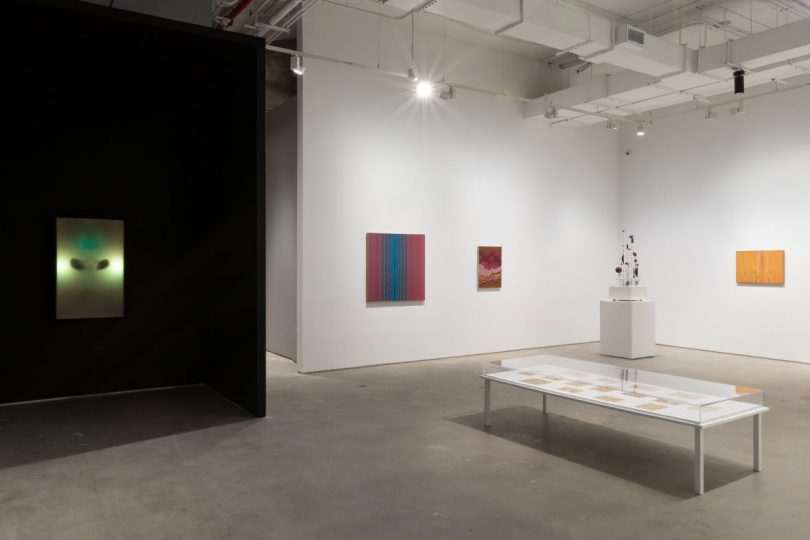
Installation view Abraham Palatnik: Seismograph of Color, Nara Roesler, New York
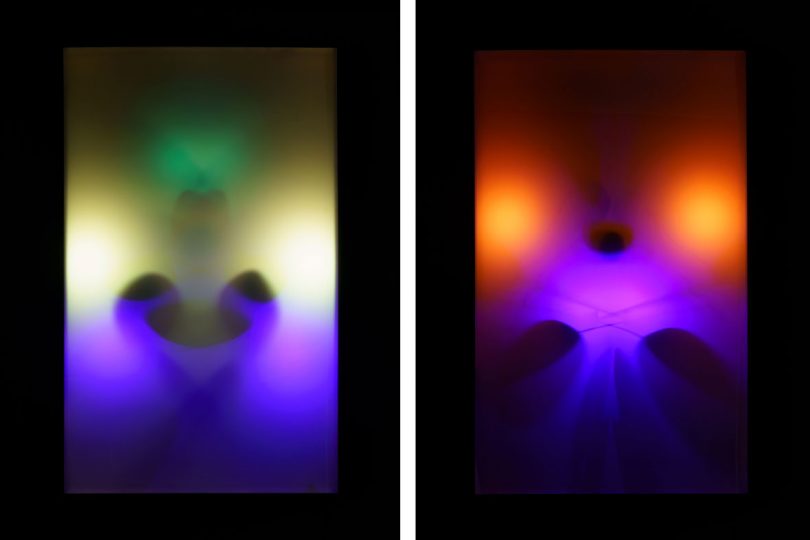
Kinechromatic device, 1950s (two different moments during motion)
Palatnik shocked the art world in the 1950s with his “Kinechromatic Devices”. These mechanical light works pre-date the works of Dan Flavin and James Turrell, and are no less wondrous today. Composed of colored light bulbs and various mechanisms within a light box, a rare example on view in the gallery creates a hypnotic, colorful Rorschach with intriguing color transitions and ethereal auras.
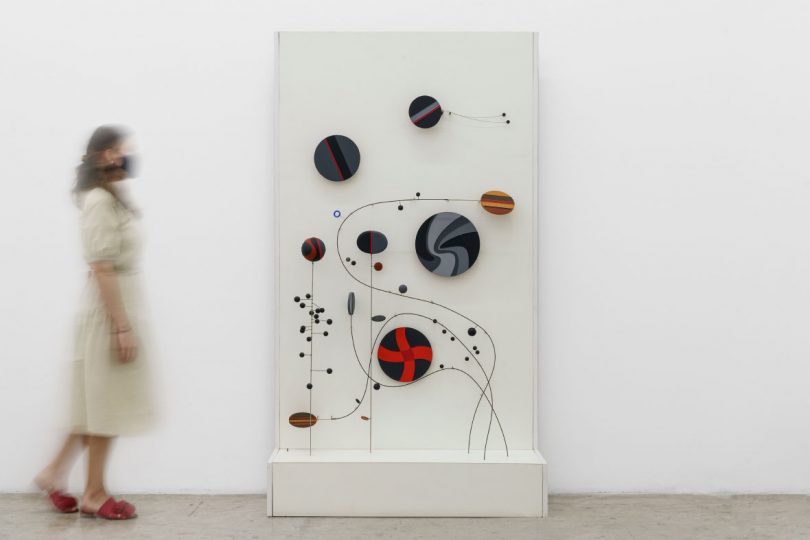
Objecto Cinético, 1968/2006
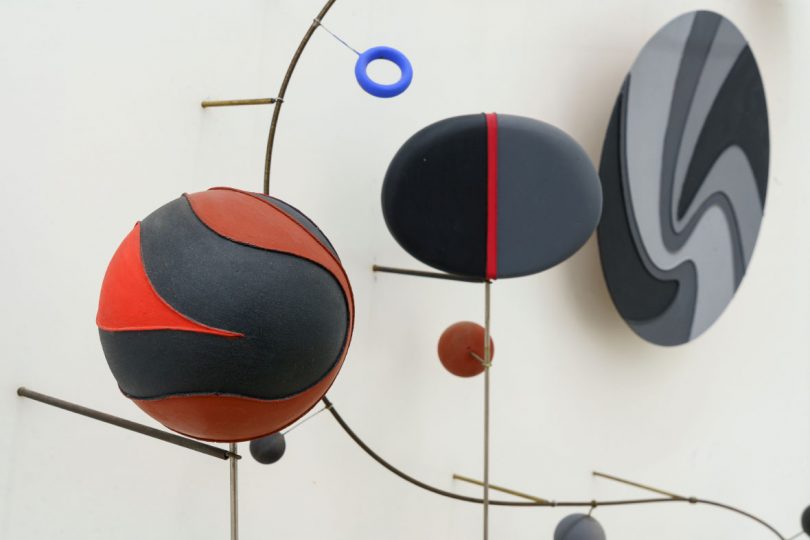
Objecto Cinético, 1968/2006 (detail)
Though the mechanisms within the light box are not visible, you’ll gain an appreciation for Palatnik’s engineering skills in works like “Objeta Cinético” (above). Capable of whimsical movement in real 3-dimensional space, they recall a moving physical Kandinsky painting. If you haven’t enjoyed the 5-minute video clip yet, you’ll see these in motion!
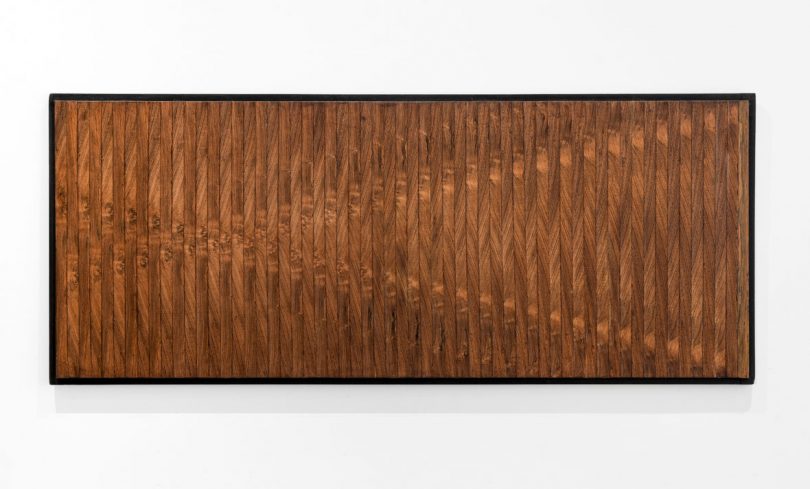
Progressão 60-A, 1965
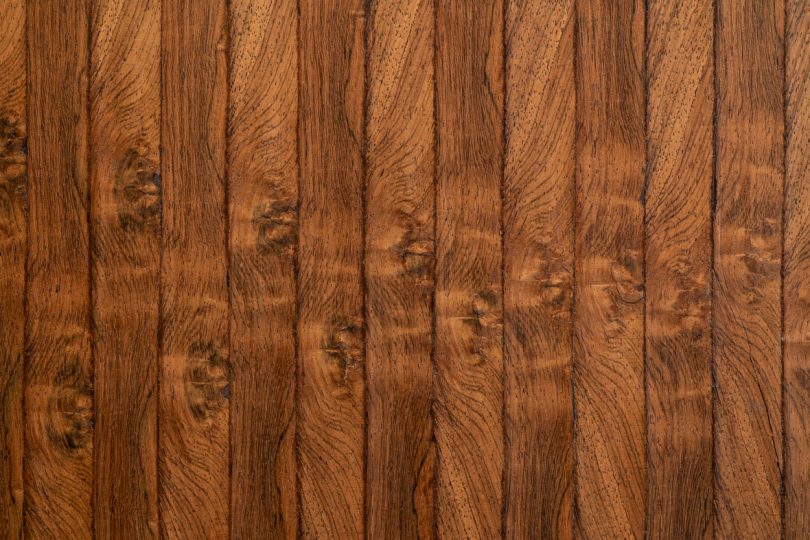
Progressão 60-A, 1965 (detail)
After establishing himself as a pioneer in light and kinetic art, it’s not surprising that Palatnik’s non-electric works emit equal wonder with a sense or illusion of movement. The wood “Progressão 60-A” (above) from 1965 was crafted entirely from Jacaranda (Brazilian Rosewood). By simply cutting and arranging strips of wood, Palatnik produces a geometric composition without any paint.
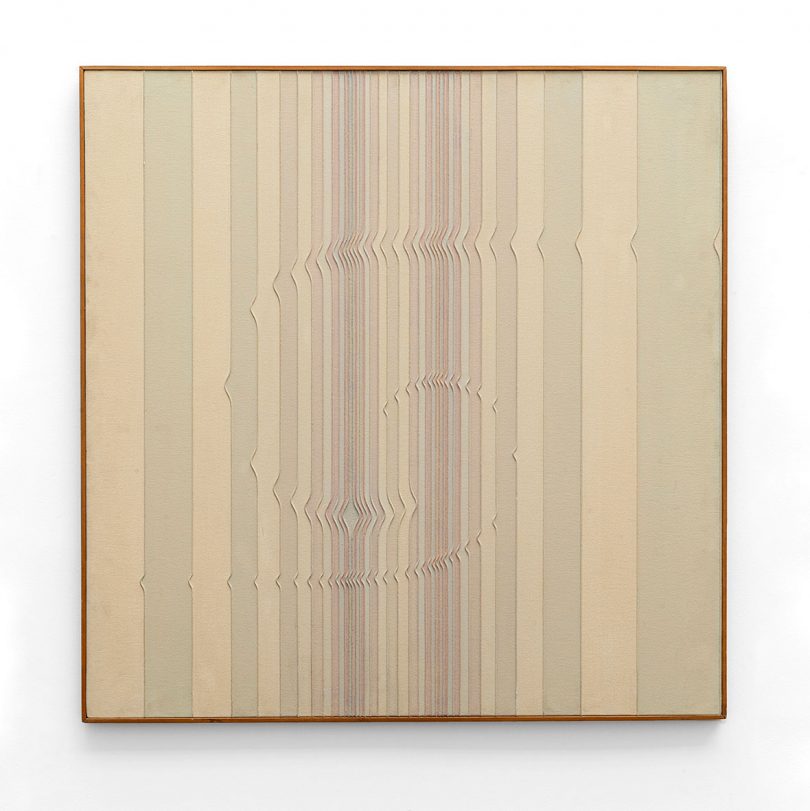
Progressão K-62, 1993
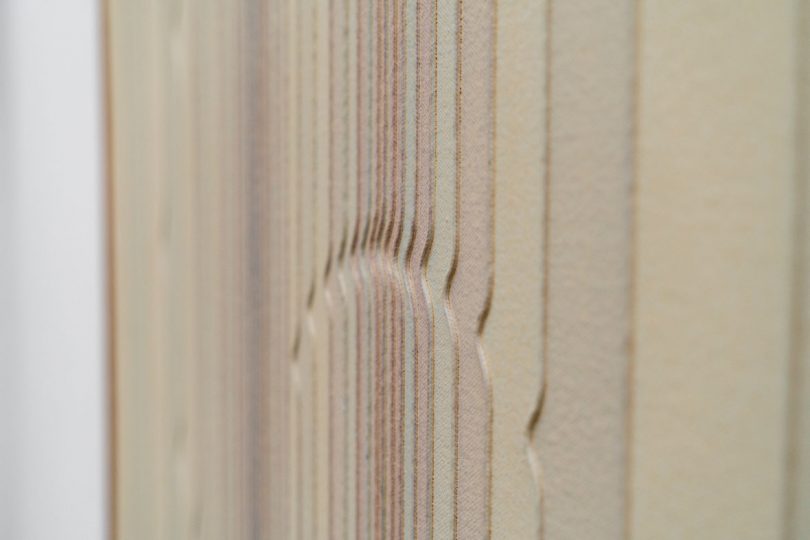
Progressão K-62, 1993 (detail)
Though Palatnik is most famous for his visually explosive cut paintings (see below), my personal favorite in the exhibition were these quieter paintings from the 1990s. “Progressão K-62” (above) uses meticulously placed string to create borders between painted stripes that gives the illusion of surface warping. The effect flutters between two and three dimensions, with a perfect balance of energy and calm.
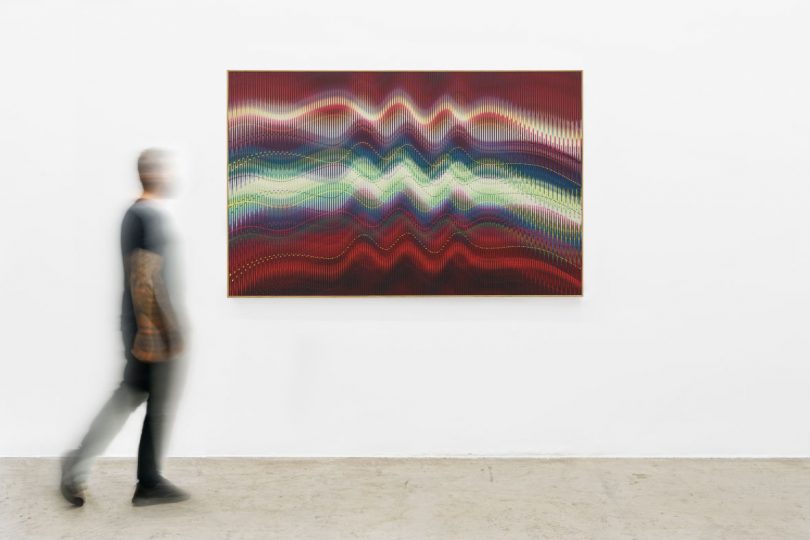
W-H180, 2019
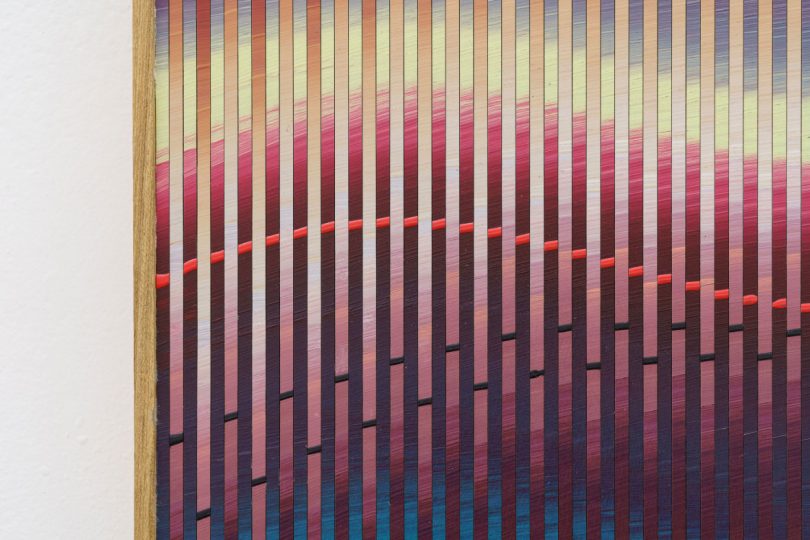
W-H180, 2019 (detail)
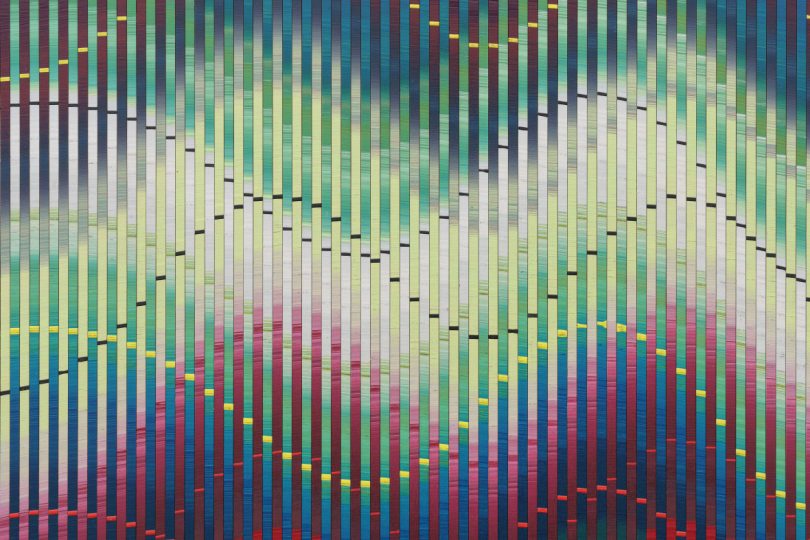
W-H180, 2019 (detail)
And finally, yes, this exhibition hosts multiple amazing paintings from the“W-series”. These works, like the 2019 “W-H180” (above) are produced by creating and cutting two paintings into narrow strips and interspersing them into a single work. Additionally, each thin strip is vertically repositioned by hand to produce dynamic waves and peaks, and may explain the name of the exhibition “Seismograph of Color”. Each work is a dance for the eyes that creates surprising translucent auras that are great to compare to the early moving light work from the 1950s nearby.

Untitled, 2019
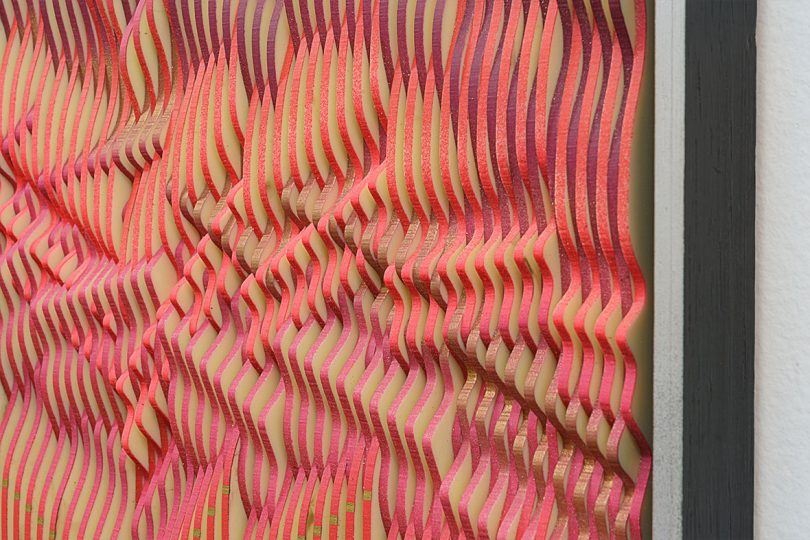
Untitled, 2019 (detail)
The exhibition concludes with a final surprise in “Untitled 2019” (above) that adds 3-dimensionality to Palatnik’s cut and arranged painting technique. Painted on acrylic with a specific wavy surface, the arrangement of pieces creates an additional composition of light and shadow with an experience that shifts from every angle.
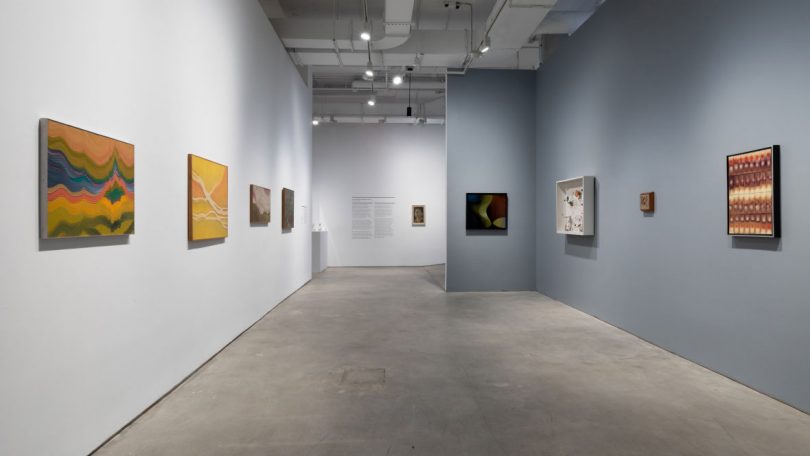
Installation view Abraham Palatnik: Seismograph of Color, Nara Roesler, New York
“Abraham Palatnik: Seismograph of Color” delivers quiet moments of wonder in every individual work while offering a satisfying snapshot of a creative life that left me inspired to rethink the expected and seek out more opportunities to view Palatnik’s work.
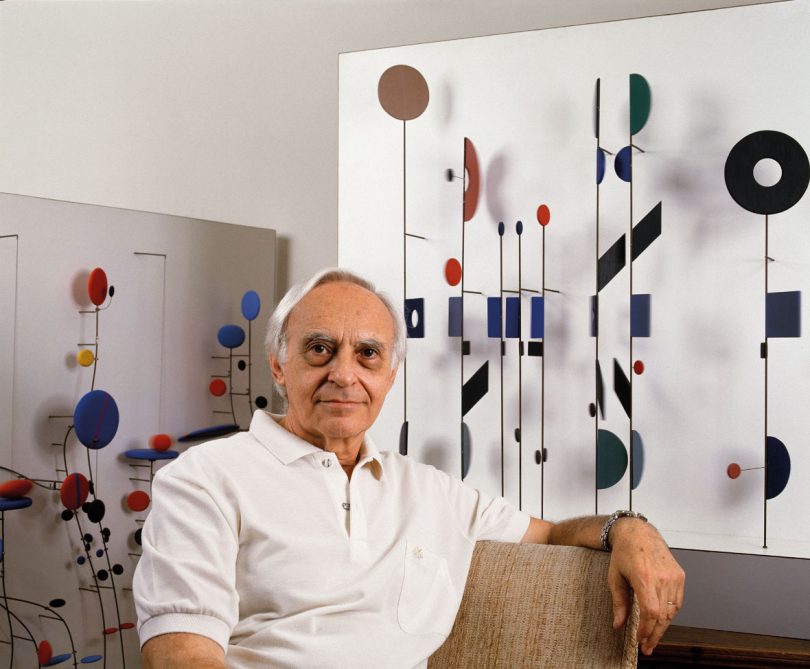
Portrait of Abraham Palatnik \ Photo: Vicente de Mello, Courtesy of Nara Roesler
What: Abraham Palatnik: Seismograph of Color, curated by Luis Pérez-Oramas
Where: Nara Roesler, 511 W 21st St, New York, NY
When: January 13 – February 19 2022
All images Courtesy the artist’s estate and Nara Roesler. Installation photographs by Jenny Gorman. Portrait photographed by Vicente de Mello.

David Behringer visits over 200 galleries every month to uncover and share the most exciting contemporary art in New York today. Subscribe to his exclusive weekly newsletter at www.thetwopercent.com and learn about his private gallery tours. And be sure to check out his YouTube.
You can follow David Behringer on Instagram. Read all of David Behringer’s posts.
